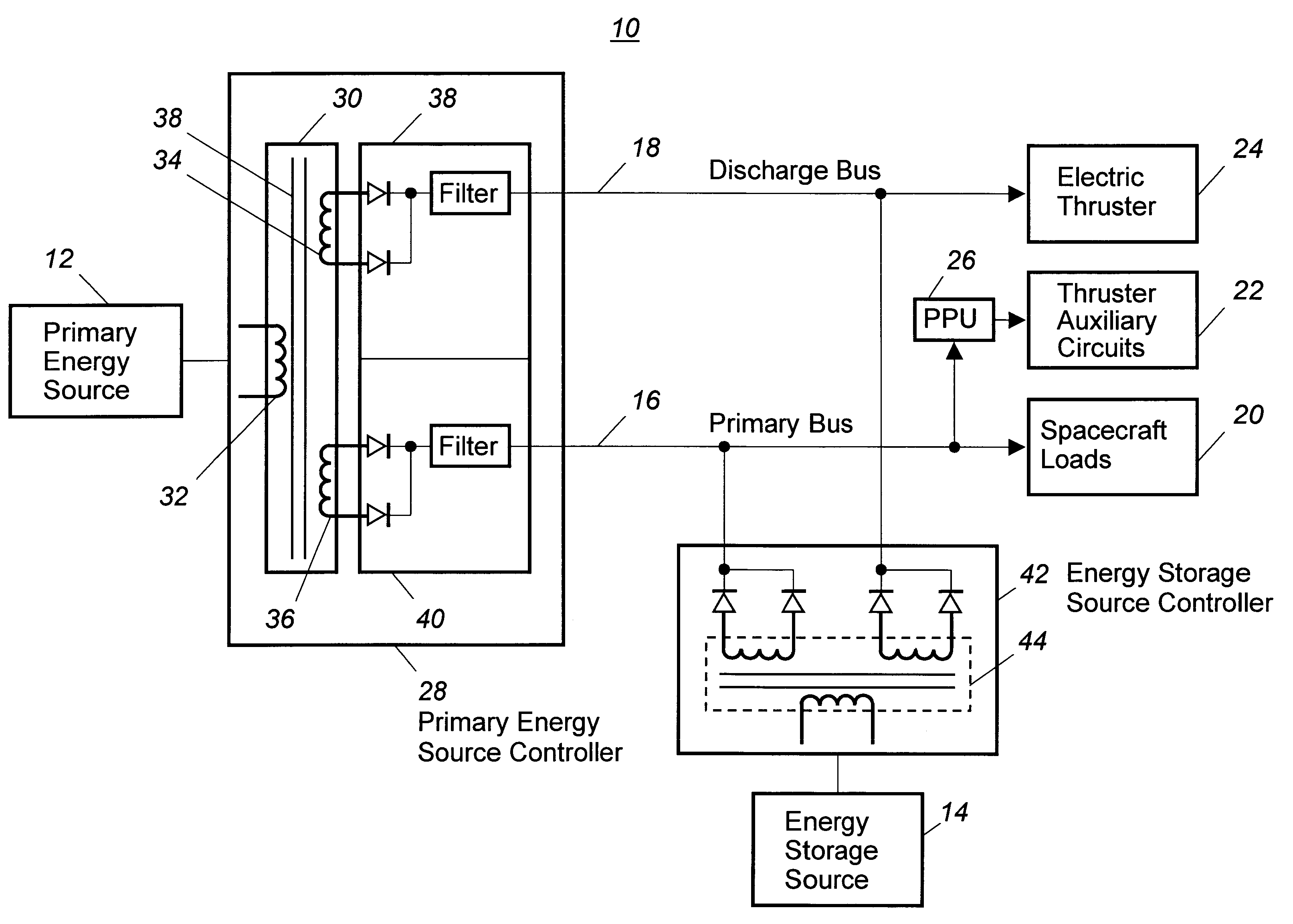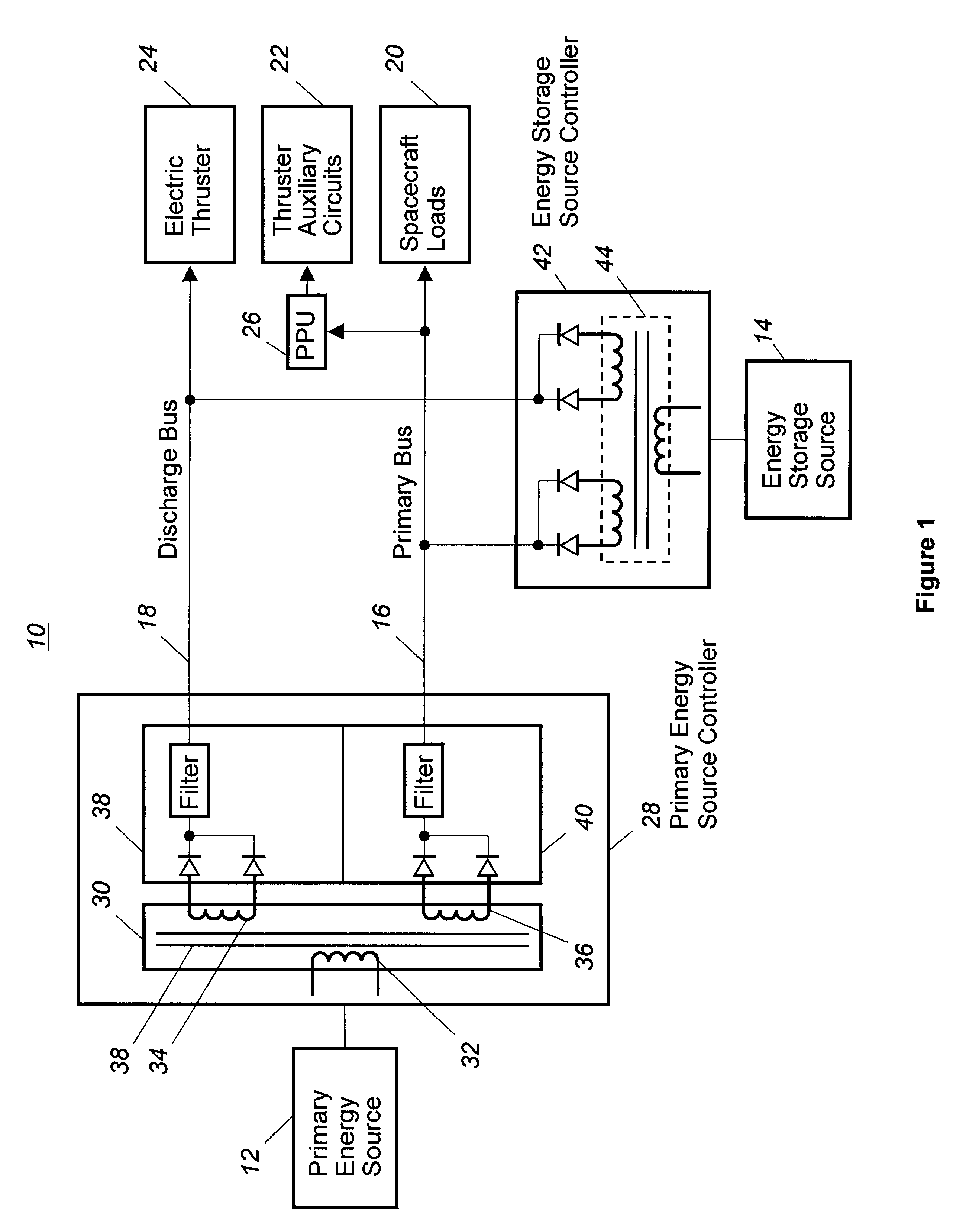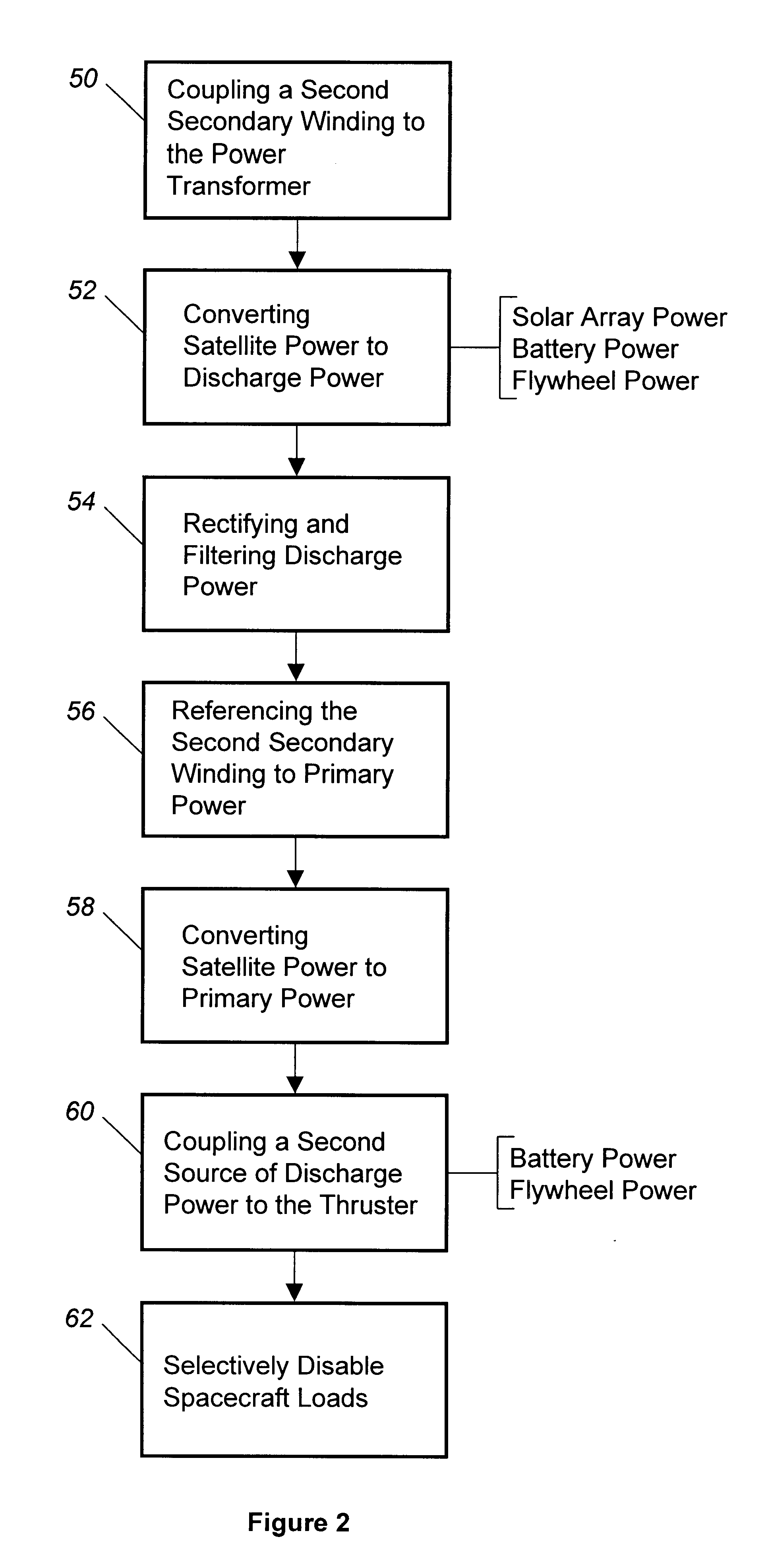Method for providing discharge power to electric propulsion thrusters
a technology of electric propulsion thrusters and discharge power, which is applied in the direction of cosmonautic vehicles, machines/engines, transportation and packaging, etc., can solve the problems of significant cost, weight and reliability penalties for the spacecraft, and the multi-kilowatt ppus used in conventional spacecraft to provide conditioned power to spacecraft electric thrusters are heavy and complex, and can not be optimized to minimize the potential cost and weight of the associated thruster ppus. , to achiev
- Summary
- Abstract
- Description
- Claims
- Application Information
AI Technical Summary
Benefits of technology
Problems solved by technology
Method used
Image
Examples
Embodiment Construction
Referring to FIG. 1, a spacecraft power system 10 according to the present invention is shown. The power system 10 links the power consuming assemblies of a spacecraft to one or more spacecraft energy sources such as primary energy sources and energy storage sources. Examples of spacecraft energy sources include solar arrays, batteries, and flywheel energy sources. The energy sources employed in a spacecraft typically provide unregulated power at differing voltage levels. The spacecraft power system converts energy from the energy sources into power that is usable by the spacecraft assemblies such as spacecraft loads, electric propulsion thrusters, and thruster auxiliary circuits.
In the presently preferred embodiment of the invention, the spacecraft power system 10 converts and conditions energy from a primary energy source 12 and an energy storage source 14 into usable power. The primary energy source 12 in the presently preferred embodiment is a solar array. However, the scope of ...
PUM
 Login to View More
Login to View More Abstract
Description
Claims
Application Information
 Login to View More
Login to View More - R&D
- Intellectual Property
- Life Sciences
- Materials
- Tech Scout
- Unparalleled Data Quality
- Higher Quality Content
- 60% Fewer Hallucinations
Browse by: Latest US Patents, China's latest patents, Technical Efficacy Thesaurus, Application Domain, Technology Topic, Popular Technical Reports.
© 2025 PatSnap. All rights reserved.Legal|Privacy policy|Modern Slavery Act Transparency Statement|Sitemap|About US| Contact US: help@patsnap.com



